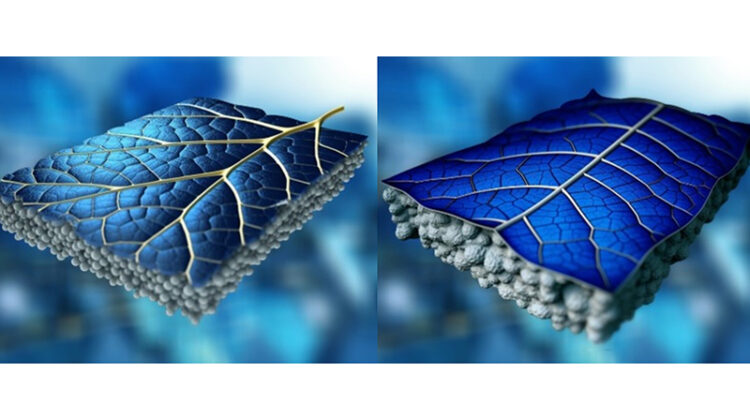
Researchers at Imperial College London have taken inspiration from nature to design a new, more efficient ‘photovoltaic-leaf’ (PV-leaf) technology that uses eco-friendly, low-cost and widely available materials.
‘This innovative design holds tremendous potential for significantly enhancing the performance of solar panels, while also ensuring cost-effectiveness and practicality,’ said Gan Huang, an honorary research fellow in the Department of Chemical Engineering.
Through a series of experiments, the team at Imperial demonstrated that its PV-leaf can generate more than ten per cent more electricity compared to conventional solar panels, which lose up to 70 per cent of the incoming solar energy to the environment as heat, increasing their operating temperature and leading to significant deterioration in their performance. By synergistically using the recovered heat to co-generate additional thermal energy and freshwater simultaneously within the same component, the PV-leaf elevates the overall solar utilisation efficiency from 13.2 per cent to more than 74.5 per cent, while also producing more than a litre of clean water per metre squared per hour. If the technology is deployed to reach solar panel targets by 2050 it could also produce more than 40 billion cubic metres of freshwater annually.
The design not only eliminates the need for pumps, fans, control units and expensive porous materials, but also enables the PV-leaf to adapt to ambient temperature and solar condition variations.
Plant leaves typically consist of a range of different structures that enable the movement of water from the plant’s roots to its leaves through a process known as transpiration. The new PV-leaf design mimics this process, allowing water to move through the device and evaporate. Natural fibres are used in place of leaf-vein bundles while hydrogels simulate sponge cells, enabling the PV-leaf to effectively and affordably remove heat from solar PV cells. ‘Implementing this innovative leaf-like design could help expedite the global energy transition, while addressing two pressing global challenges: the need for increased energy and freshwater,’ said Professor Christos Markides, head of the Clean Energy Processes Laboratory.
Researchers at Imperial College London have taken inspiration from nature to design a new, more efficient ‘photovoltaic-leaf’ (PV-leaf) technology that uses low-cost materials.
‘This innovative design holds tremendous potential for significantly enhancing the performance of solar panels, while also ensuring cost-effectiveness and practicality,’ said Gan Huang, an honorary research fellow in the Department of Chemical Engineering.
Through a series of experiments, the team at Imperial demonstrated that its PV-leaf can generate more than ten per cent more electricity compared to conventional solar panels, which lose up to 70 per cent of the incoming solar energy to the environment. If the technology is deployed to reach solar panel targets by 2050 it could also produce useful thermal energy, as well as more than 40 billion cubic metres of freshwater annually.
This design not only eliminates the need for pumps, fans, control units and expensive porous materials, but also enables the PV-leaf to adapt to ambient temperature and solar condition variations.
Plant leaves typically consist of a range of different structures that enable the movement of water from the plant’s roots to its leaves through a process known as transpiration. The new PV-leaf design mimics this process, allowing water to move through the device and evaporate. Natural fibres are used in place of leaf-vein bundles while hydrogels simulate sponge cells, enabling the PV-leaf to effectively and affordably remove heat from solar PV cells.
‘Implementing this innovative leaf-like design could help expedite the global energy transition, while addressing two pressing global challenges: the need for increased energy and freshwater,’ said Professor Christos Markides, head of the Clean Energy Processes Laboratory.
The research has been published in Nature Communications.


